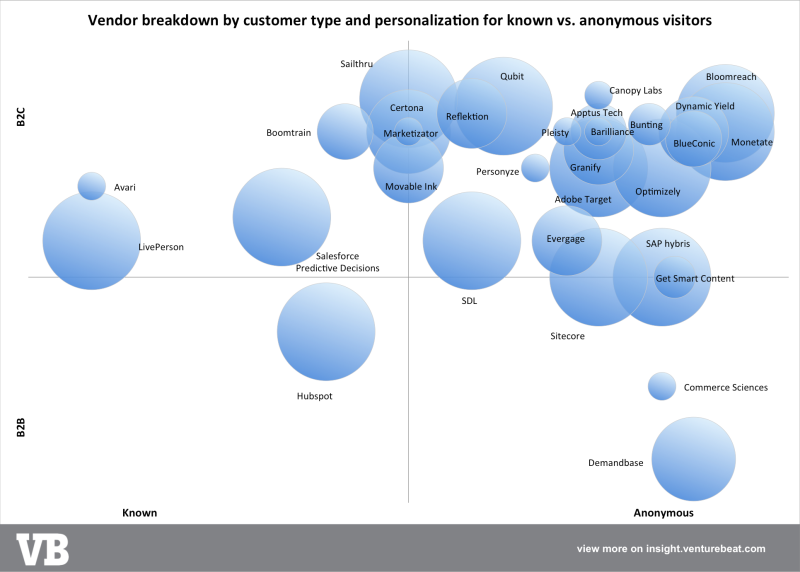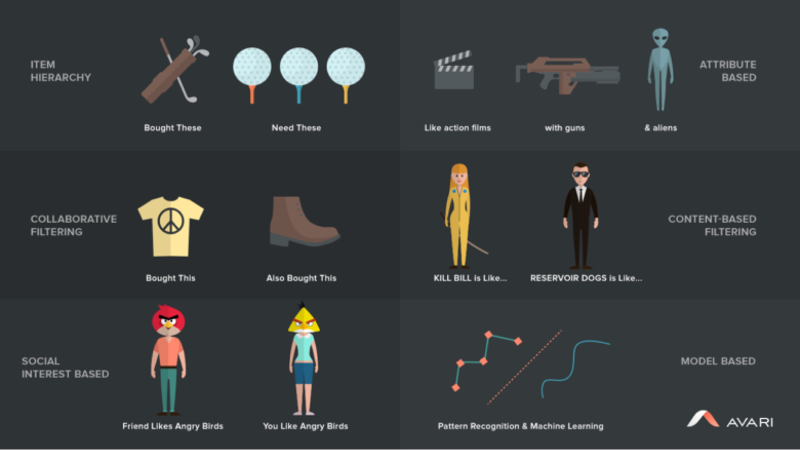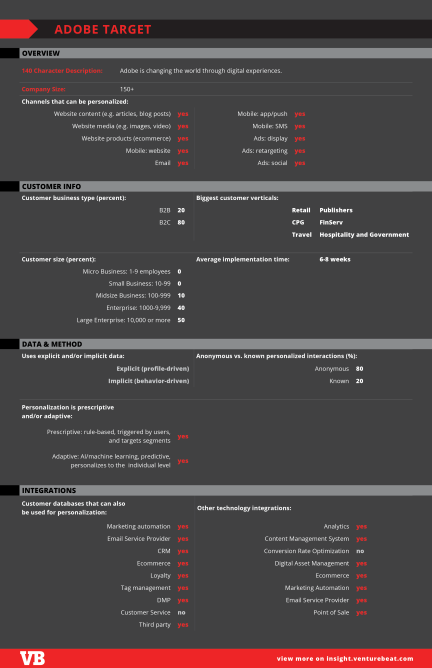What if you could not only understand but also predict consumer behavior on your site? In real time, for anonymous visitors and customers alike? That’s the promise behind a new generation of vendors who are making this technology available to even micro-businesses (employees 1-9).
More than 97 percent of a typical B2C’s website’s audience is anonymous. For B2B that number varies between 57 and 90 percent. Yet personalization only starts when the visitor shares an email address or signs up. This is driven by the simple fact that web personalization is hard, especially at the top of the funnel.
There’s a lot of ambiguity about anonymous user behavior and not enough data to help create rules around personalization, real time or otherwise. Traditionally, the companies who personalize at the top of the funnel have needed big budgets and dedicated resources in marketing and engineering to tackle this challenge.
Personalization is on the rise
A recent report by VB Insight found that personalization is on the rise even in small and micro-businesses. The key driver has been the number of vendors who have emerged in solving the real-time personalization challenge.
AI Weekly
The must-read newsletter for AI and Big Data industry written by Khari Johnson, Kyle Wiggers, and Seth Colaner.
Included with VentureBeat Insider and VentureBeat VIP memberships.

Since one solution does not address all situations, vendors are using multiple approaches to solve this problem.
One approach in particular, adaptive personalization, stands out due to its ability to deliver personalized content and recommendations in real time.
Adaptive personalization delivers real-time personalization
Personalization today tends to be rules-driven. This is typically a resource-heavy manual process, with a focus on broad segments over individuals.
Adaptive personalization uses machine learning to profile individuals, deducing more with each user action.
Web personalization tools in this category use a combination of actual user behavior and the implied interests to build visitor profiles — “behavioral profiling,” in other words. This helps create a flexible set of algorithms that can personalize the experience at an individual level, without requiring manual intervention.
Examples of adaptive-personalization algorithms
- Item Hierarchy: You bought a set of golf clubs, therefore you also need golf balls
- Attribute Based: You like action-packed, non-violent, science-fiction movies with a strong female hero
- User-User Similarity: People like you who bought opinionated t-shirts also bought fashionable combat boots
- Item-Item Similarity: Kill Bill is similar to 12 Monkeys, therefore since you liked the former, you will like the latter

Hybrid recommendation engines, which combine multiple algorithmic methods, are able to achieve greater degrees of personalization than those that use a single method.
Predictive analytics brings scale / adds to scalability
If algorithms (aka machine learning) are one end of the adaptive personalization spectrum, the other end is predictive analytics.
Traditional analytics requires a lot of work to unearth insights to use for future actions. Predictive analytics, by comparison, uses automation to identify patterns found in historical data. The identified patterns then help inform or recommend future actions, making personalization efforts scale more efficiently.
It is this combination of machine learning algorithms coupled with site-specific predictive analytics that makes adaptive personalization very attractive.
Real-time personalization is the way forward
Prior research has revealed that the half-life for smaller purchases is brief. There is a 70 percent decline in interest in 12 hours. It is increasingly becoming crucial to deliver personalized content or recommendations in real time to engage and convert your visitors.
Vendors offering technologies like adaptive personalization now allow even smaller companies to be able to personalize, one anonymous visitor at a time. Identifying and short-listing vendors who match your personalization needs can be an onerous process. To help with that effort, VB Insight reviewed 47 technology vendors that provide personalization capabilities to help align your own personalization needs with the most relevant approach and vendors.

VentureBeat's mission is to be a digital town square for technical decision-makers to gain knowledge about transformative enterprise technology and transact. Learn More
